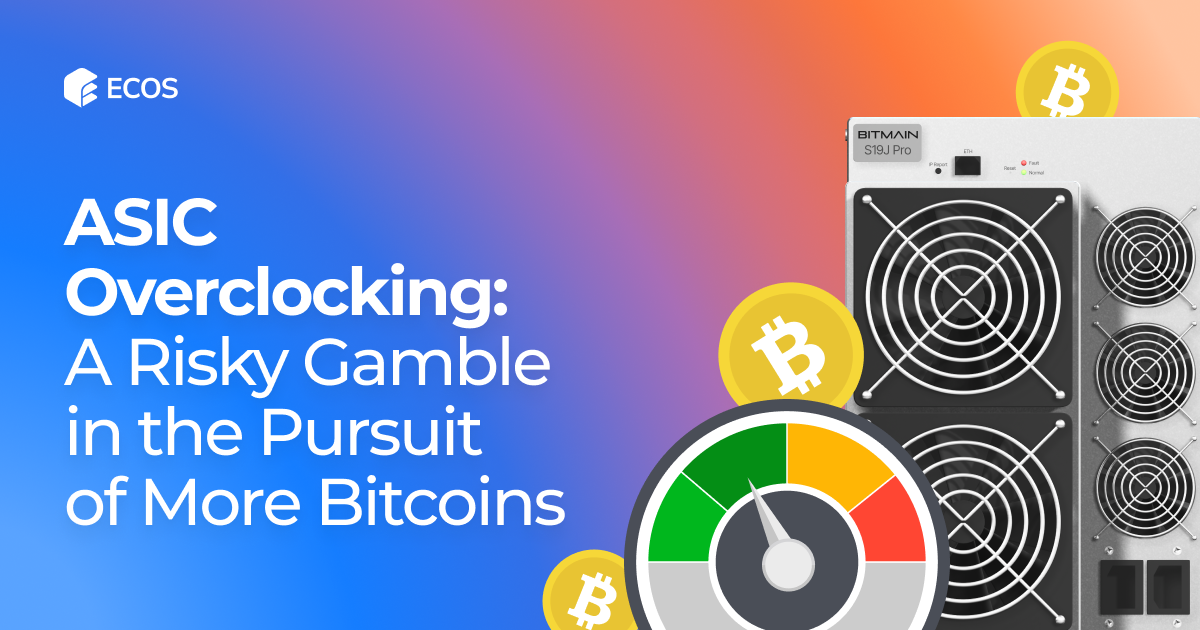ASIC Overclocking: A Risky Gamble in the Pursuit of More Bitcoins

ASIC Overclocking: A Risky Gamble in the Pursuit of More Bitcoins
As the cryptocurrency market continues to evolve and becomes increasingly competitive, miners are always on the lookout for ways to maximize their profits. One technique that has gained attention is ASIC overclocking, a practice that involves pushing the performance limits of mining hardware to extract more Bitcoins. In this article, we’ll explore the methods, difficulties, and potential circumstances surrounding ASIC overclocking, shedding light on the risks involved in this high-stakes endeavor.
Methods of ASIC Overclocking
- Installation of a More Powerful Power Supply:
One of the primary methods of ASIC overclocking involves upgrading the power supply unit (PSU) to deliver more electricity to the mining hardware. Overclockers opt for higher wattage PSUs to ensure that the increased power demand of overclocked ASICs is met adequately. This extra power enables the ASIC to run at higher clock speeds, potentially increasing mining performance.
- Changing the Firmware to Custom:
Modifying the firmware of an ASIC miner is another common overclocking technique. Miners often replace the stock firmware with custom versions that allow for greater control over the hardware’s performance settings. With custom firmware, miners can adjust clock speeds, voltages, and fan speeds to optimize the ASIC’s performance.
- Enabling Additional Options:
Many ASIC miners come with hidden or restricted features that can be unlocked to improve performance. Overclockers often look for ways to enable these hidden options, such as adjusting voltage settings or unlocking additional cores on the ASIC chip. These modifications can provide a significant boost in hashing power.
Difficulties in ASIC Overclocking
While ASIC overclocking may seem like a straightforward path to higher mining rewards, it comes with its own set of challenges and risks:
- Risk of Hardware Damage:
Overclocking an ASIC involves running it at higher speeds and voltages than it was designed for. This increases the risk of overheating and hardware failure, potentially rendering the ASIC miner useless.
- Warranty Voidance:
Overclocking typically voids the manufacturer’s warranty, leaving miners responsible for any repairs or replacements in the event of hardware failure. This can be a costly consequence of pushing ASICs to their limits.
- Increased Energy Consumption:
Overclocked ASICs consume more power than their stock counterparts. This not only raises electricity costs but also places additional stress on the power infrastructure, potentially leading to electrical issues.
In conclusion, ASIC overclocking can be a tempting avenue to increase Bitcoin mining profitability, but it comes along with significant risks. Miners should carefully weigh the potential benefits against these risks before embarking on overclocking ventures.
ECOS technical team prioritizes the maintenance of all mining devices to ensure their longevity and reliability. While ASIC overclocking may be a viable option for some, it is essential to acknowledge the dangers it poses to mining equipment. ECOS remains committed to safeguarding mining investments and maximizing profitability through more sustainable means, such as provision of the most powerful devices, reduced hosting fees for special package deals as well as an eco-friendly approach.
If you are interested in sustainable, guaranteed and green mining operations – you are welcome to build your mining farm at ECOS!









